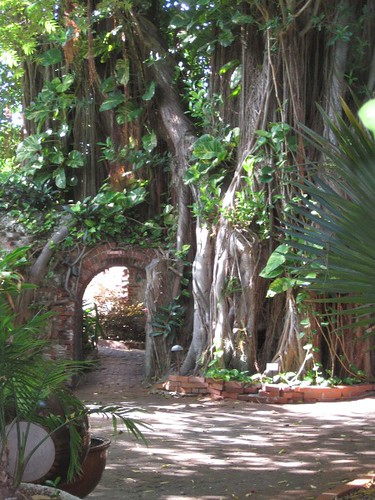 |
| Strangler fig covering a section of wall at the Martello Tower |
On the island of Key West, not far from the marker for the "southern most point in the continental US" is the West Martello Tower and gardens, which is maintained by the
Key West Garden Club. This beautiful garden is the site of a never-completed fort, which is really just a great setting, with brick walls of various heights and wandering paths through what is not a lush tropical garden.
 |
| Christie enjoying the beautiful Martello Tower gardens |
I have to admit, I enjoyed visiting here much more as it is today than I would have if it had been completed and now stood as a military historical site.
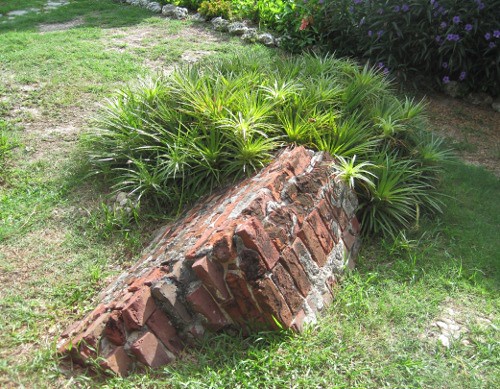 |
| Bromeliads planted around a collapsed portion of wall |
The grounds are filled with nice compositions, including the nice spot above where some chunk of brick wall has collapsed and lays half buried, book-ended with a spreading bromeliad.
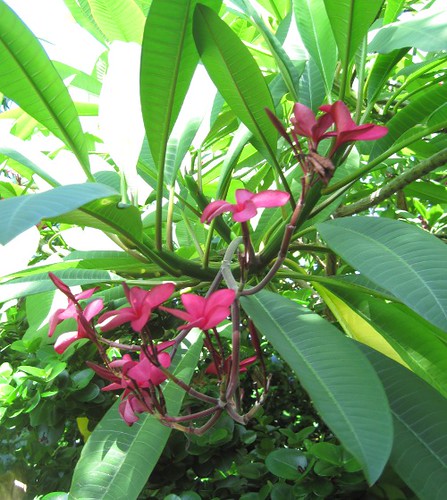 |
| Gorgeous Plumeria rubra blooms |
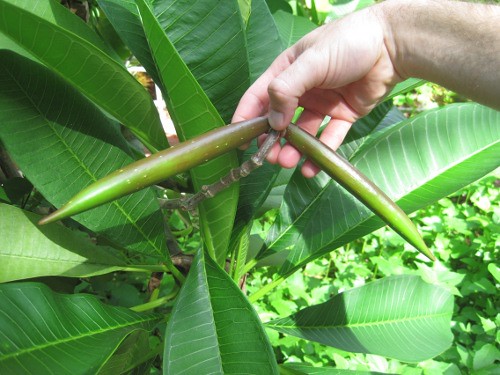 |
| Interesting Plumeria seed pods |
Many people are familiar with the Plumeria pictured above. This is sometimes called Frangipani. It has a beautiful flower, which has been bred for different colors. But the tree is more or less the same for each of these different bloom colors. The Martello Tower Gardens had another species of
Plumeria (below), which I hadn't seen before this Florida trip.
Plumeria pudica has a different shaped leaf and the flowers are pure white, with the slightest bit of yellow in the center. (It's hard to see the yellow in my image due to the bright sun.)
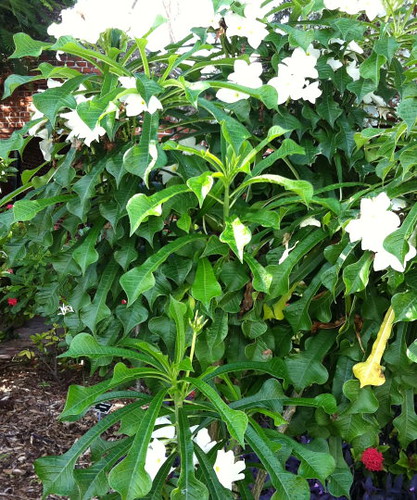 |
| Plumeria pudica |
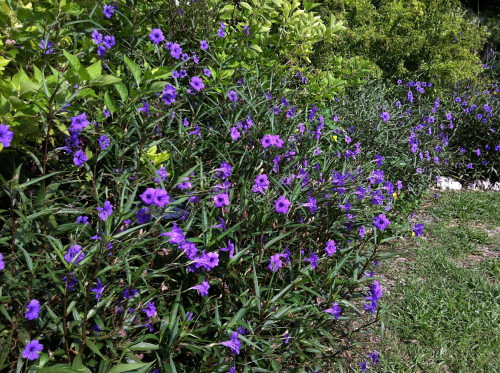 |
| Lots and lots of Ruellias! |
I have seen Screwpine trees (
Pandanus) in just a couple of places. They are known for their network of stilt roots, which are usually spiny. The first time was in the tropical dome at the Missouri Botanical Gardens in St. Louis. The second time would be in conservatory at the Fort Worth Botanic Garden, where there is a large
Pandanus whose huge stilt roots reach into the water of the adjacent pond and fragment into a
million tiny roots. That was a site to see. There are also quite a few
Pandanus growing at the Fairchild Tropical Botanical Gardens in Miami.
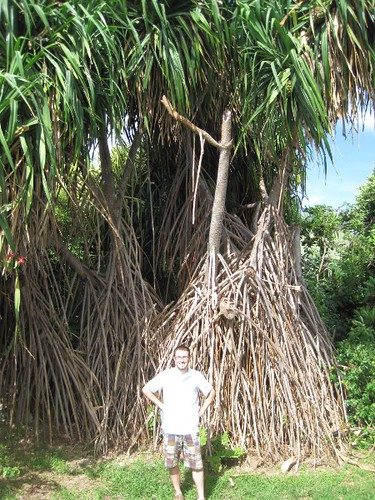 |
| Pandanus sanderi tree with amazing prop roots |
 |
| Dark pink canna |
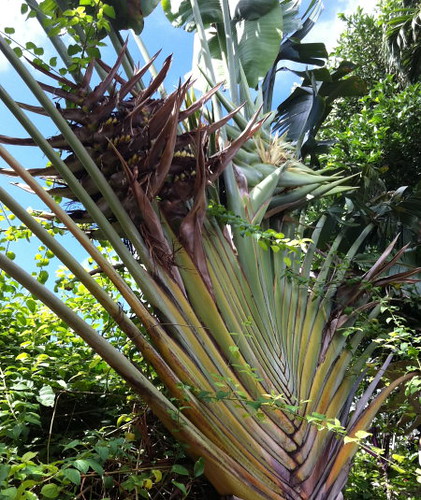 |
| Traveller's palm (Ravenala madagascariensis) in bloom |
The tree pictured above is called the Traveller's Palm, although it is not really a palm. I have seen these trees in just about every tropical, beach front area I have visited and always just assumed they were in the palm family (Arecaceae) or possibly the banana family (Musaceae). But when I saw this tree at the Martello garden I realized it had to be in the same family as the Bird of Paradise (Strelitziaceae). The bloom bracts are unmistakeably similar. Reading the wikipedia page confirmed my conviction and also mentioned that this tree was once upon a time placed in the banana family - just as I would have put it, without seeing a bloom. It belongs to the monotypic genus,
Ravenala, and is native to Madagascar.
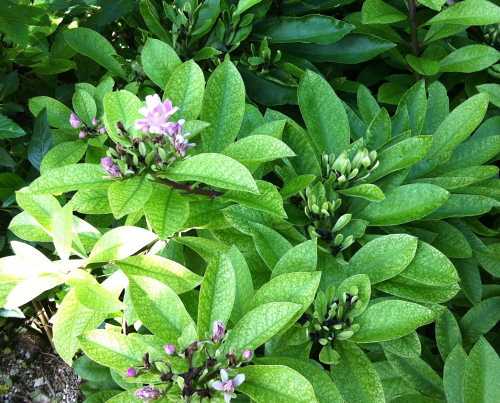 |
| Rose cactus - Pereskia grandifolia |
The plant pictured above is called "rose cactus" because it has nice blooms and some killer thorns. It
is actually a cactus, which kind of surprised me, since it does not have the normal succulent look to it. We saw
Ixora all over southern Florida and I really liked their profusion of blooms - usually coral in color, like the plant pictured below.
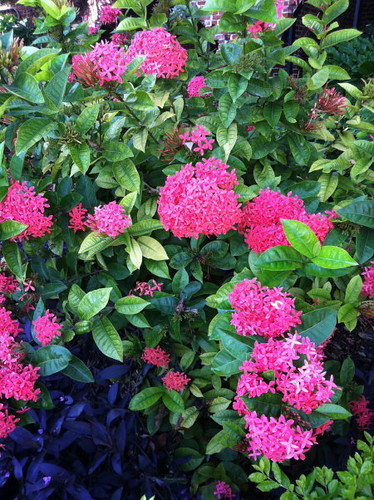 |
| Coral colored Ixora |
I think the
Jatropha (below) was probably my favorite blooming plant at the Martello Tower, with dark leaves of interesting shapes and vibrant and contrasting blooms.
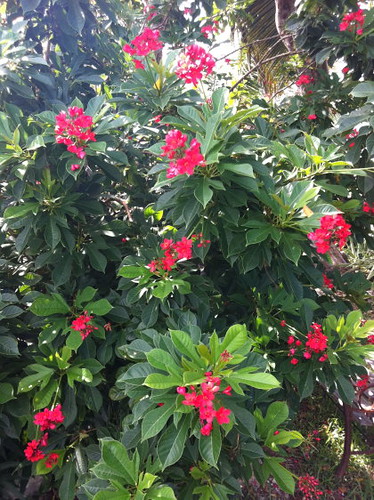 |
| Jatropha integerrima |
Well, the first half of this post was the colorful half. The rest is shades of green only. These happen to be some of my favorite plants. I was really excited to see that the Key West Garden Club has a nice collection of
Dieffenbachias and
Aglaonemas inside their tower walls. The plants are exposed to the elements and natural sunlight, but are inside a bricked area, so they are probably a little more sheltered. Also, these plants were all growing in pots, whereas most of the rest of the plants in the gardens are growing in the ground.
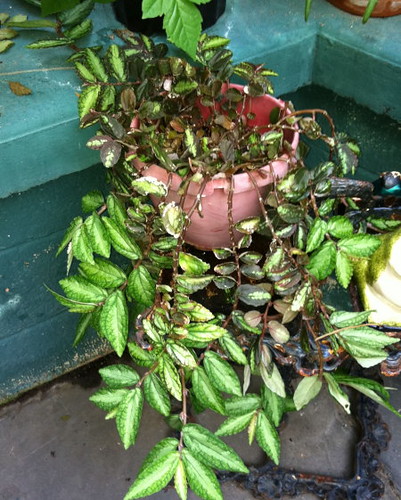 |
| Pellionia repens |
But before we get to all of the
Dieffenbachias, check out this large
Pellionia repens. I thought it was interesting to see how the leaf colors vary on this plant. I have this species myself, growing in a tall glass terrarium. It is sometimes referred to as "Trailing Watermelon Begonia," but it is not actually from the
Begonia genus. Good thing, because I have more luck with this plant, than I do with
Begonias, generally speaking. This species is probably the second most common Pellionia, after
Pellionia pulchra.
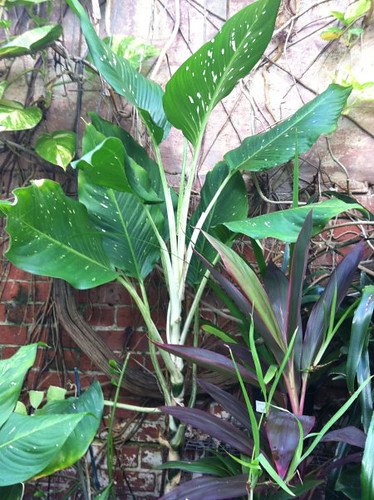 |
| Dieffenbachia oerstedii |
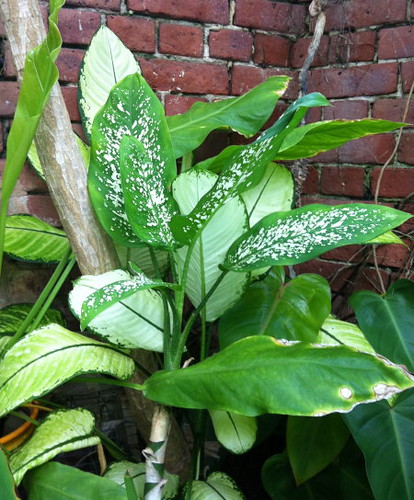 |
| Dieffenbachia maculata |
I didn't know the ID of any of these
Dieffenbachias for sure, but I had a pretty good idea about the one that turned out to be
Dieffenbachia amoena 'Tropic Snow' because my mom has that one. I consulted with my
Dieffenbachia enthusiast friends and got help on the other names. It turns out that the speckled plant pictured above is the species
Dieffenbachia maculata and the plant below is a cultivar,
Dieffenbachia maculata 'Rudolph Roehrs'. In some cases, the cultivar reverts to the original species, as shown in
this picture by my friend, Russ Hammer.
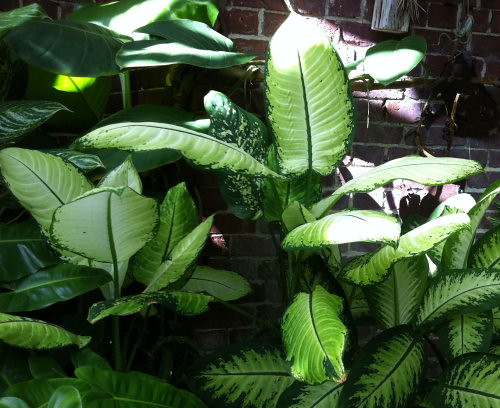 |
| Dieffenbachia maculate 'Rudolph Roehrs' |
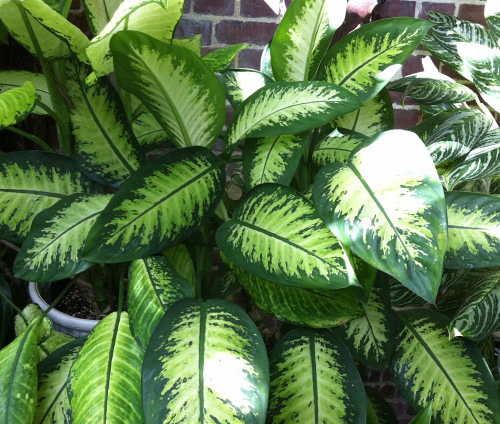 |
| Dieffenbachia amoena 'Tropic Snow' |
The Martello Gardens also had a small, but happy collection of orchids and a small collection of bonsai trees. The bonsai trees were all mislabeled, which I found to be interesting, but not surprising. I bet they were all repotted at some point and then the labels got put back in the wrong pots. I did notice that one label was in the wrong pot, but some of the labels didn't match any of the plants I saw. Regardless, I could appreciate their appearance and really enjoyed my time at this garden!


















Oh, love the photos and plants. Wonder if my plumeria will ever bloom? The blooms are so pretty. It grew more than ever this summer so it must love the high heat. I am just hoping it does not drop its leaves now that I have brought it inside due to the cold.
ReplyDeleteThe palm root system was amazing! I definitely need to visit this place.
So glad to finally have an ID on Plumeria pudica! I've seen it around but it's never once been labeled.
ReplyDelete